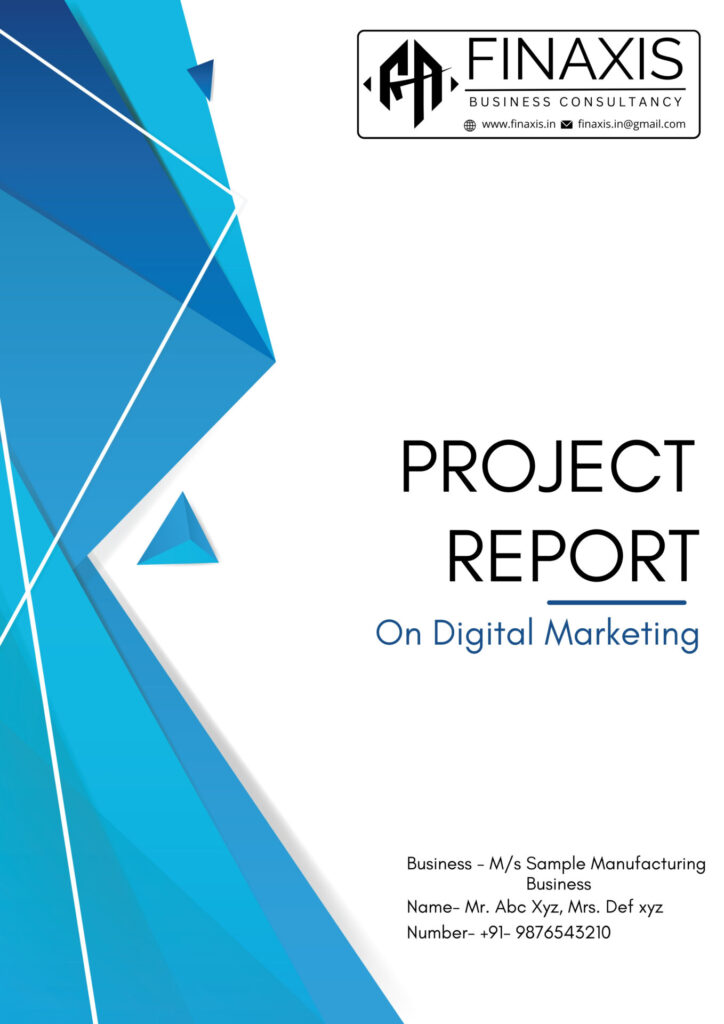Loan Scheme Available For
MSMEs In Nagaland

Nagaland, a state in northeastern India, has a strong and diverse micro, small, and medium enterprise (MSME) sector. To promote the growth and development of this sector, the Nagaland government has introduced a number of credit schemes exclusively for MSMEs. These lending schemes provide financial aid to entrepreneurs, allowing them to start or expand their firms. In this blog, we’ll look at some of the MSME financing packages available in Nagaland.
Nagaland State Industrial Development Corporation’s (NSIDC) Term Loan Scheme:
The NSIDC Term Loan Scheme helps new and existing MSMEs establish new units, expand existing ones, and modernize them. This loan requires the beneficiary to provide collateral. The following are the main features of this scheme:
- Loan amount: up to ₹50 lakh,
- Collateral required, and
- Loan tenure: Up to seven years.
- Annual Guarantee Fee: 0.37%-1.35%.
- Age: Minimum age of 18.
Nagaland State Cooperative Bank’s (NSCB) MSME Loan Scheme:
The NSCB Loan Scheme helps MSMEs finance the establishment of new units, as well as the expansion and modernization of existing ones. To obtain this loan, you must present collateral. The collateral could be land, property, or any other asset. Here are some of the highlights:
- Loan amount ranges from ₹5 lakh to ₹50 lakh.
- Collateral required.
- Loan tenure : Up to seven years.
- Moratorium period : 2 years for principal payments.
- Preference : Units placed in NIDC-developed industrial estates

Nagaland State Rural Livelihoods Mission MSME Loan Scheme (NSRLM)
The NSRLM seeks to improve the livelihoods of rural populations in Nagaland by promoting sustainable livelihoods. This plan provides financial assistance to women’s self-help groups (SHGs) to create small businesses. Here are some of the highlights:
- Loan amount : ₹1 lakh to ₹5 lakh
- Collateral : Depending on the nature of the loan
- Loan tenure : 5 years
- Interest rates : 4% to 7% (subsidized Rates)
- Preference : Self Help Groups (SHGs) formed and promoted by NSRLM
PM formalized the Micro Food Processing Enterprises Scheme
PM Formalisation of Micro Food Processing Enterprises project is a project developed by India’s federal government to assist existing micro food processing units in upgrading and formalizing their operations. This initiative is only applicable to existing units with an annual turnover of up to 25 lakhs. Here are some of the highlights:
- Soft Loan amount : Up to ₹2 lakh
- Subsidy : 70% subsidy on capital expenditure (maximum ₹1 lakh)
- Loan tenure : 6 months to 3 years
- Extra benefits : Handholding support, technical assistance, and skill development training
- Preference : Farmer Producer Organizations (FPOs), Self Help Groups (SHGs), and producer cooperatives
Credit-Linked Capital Subsidy Scheme (CLCSS)
In October 2000, the Government of India established the Credit Linked Capital Subsidy Scheme. This plan offers MSMEs with the necessary financing to upgrade their present technologies. Businesses can utilize this initiative to improve their existing plant and machinery and increase profits. This policy has no upper loan limit, however the subsidy is based solely on the loan amount sanctioned for P&M purchases. It has the following primary features:
- Loan amount: no upper limit.
- Subsidy: 15% of loan amount.
- Annual guarantee fee: 0.75-1.0%.
- Loan tenure: Flexible tenure based on the repayment capacity
Pradhan Mantri Mudra Yojana (PMMY).
The Pradhan Mantri Mudra Yojana (PMMY) is a major central government plan that debuted in 2015. It makes microloans to non-corporate, non-farm micro, and small businesses in both rural and urban locations.
PMMY provides loans in three categories, based on the stage of business growth and finance requirements:
- Shishu Mudra: Up to Rs. 50,000
- Kishore Mudra: Rs. 50,001 to Rs. 5 lakh
- Tarun Mudra: Rs. 5 lakh to Rs. 10 lakh
MUDRA loans are available through a variety of financial institutions, including public and private sector banks, regional rural banks, small finance banks, microfinance institutions, and non-banking financial companies (NBFCs).
Unlike other loan schemes, PMMY has no age, gender, duration, or interest rate requirements. All of these elements can vary depending on the loan category and the lending institution’s policies.
PM’s Employment Generation Programme (PMEGP)
PMEGP is a credit-linked subsidy system operated by the Ministry of Micro, Small, and Medium Enterprises (MSME) that intends to provide job possibilities through the establishment of micro-enterprises. The primary beneficiaries of this initiative are women, traditional and potential craftspeople, and unemployed youngsters. Here are some of its primary features:
- Age: Minimum age of 18.
- Interest rates: vary between 11% and 12% based on the bank.
- Loan tenure: 3-7 years.
- Education qualification: VIII standard pass.
- Maximum loan amount: Rs. 1 Crore.
- Subsidy: 15% to 35%.
Credit Guarantee Fund Trust for Micro and Small Enterprises (CGTMSE)
The CGTMSE is a cooperative project initiated in 2000 by the Ministry of Micro, Small and Medium Enterprises (MSME), the Government of India, and the Small Industries Development Bank of India (SIDBI). It promotes financial institutions to offer collateral-free credit solutions to micro and small businesses. In the event of a default, the bank might submit a claim with CGTMSE. Here are some of its primary features:
- Loan amount: Up to 5 crore.
- Collateral is not required.
- Loan tenure: 5-10 years.
- Annual Guarantee Fee: 0.37%-1.35%.
- Age: Minimum age is 18.
Stand Up India
Stand-up India is a central government project that began in 2016. It offers bank loans to women and Scheduled Castes (SCs) and Scheduled Tribes (STs) to start their own businesses. Existing firms are ineligible for loans under this scheme because they are intended for new businesses only. These loans are supplied by a variety of banks, including scheduled commercial banks, regional rural banks (RRBs), and small financing banks.
This initiative offers loans ranging from Rs 10 lakhs to Rs 1 crore. Interest rates and tenure vary depending on the type of the firm, as well as other considerations such as the lender’s credit policies.
SIDBI Make-in-India Soft Loan Fund for Micro, Small, and Medium Enterprises (SMILE)
The national government established SMILE, a project to provide financial help to 25 identified sectors as part of the ‘Make in India’ strategy. This project encourages the ‘Make in India’ concept among entrepreneurs. SMILE provides ample finance for both the establishment of new firms and the expansion of existing ones. Here are some of its primary features:
- Maximum loan tenure: 10 years.
- Loan amount: ranges from Rs.10 lakh to Rs.25 lakhs.
- Interest rates: vary based on corporate requirements.
- Nature of the loan: Term Loans and quasi-equity loans
Conclusion
The growth and development of SMEs in Nagaland is greatly aided by these financing programs and initiatives. Entrepreneurs can achieve their company goals, generate jobs, and advance the socioeconomic development of the state by utilizing financial aid and support services.


INVEST MP Expression of Interest (EOI) For Inviting Online Tender…

Special Advance Authorization for Garments View Sample Report Directorate General…

Unutilized Input Tax Credit Refund Under GST View Sample Report An…

What is MSME Loan? View Sample Report Entrepreneurs and business owners…

ICICI Bank Business Loan View Sample Report ICICI Bank business loan…

PNB Bank Business Loan View Sample Report (Punjab National Bank) PNB Bank Business…

HDFC Bank Business Loan View Sample Report HDFC Bank Business Loan…

Equipment Finance Scheme For Existing Clients – TIIC View Sample…

Documents Required For GST Registration View Sample Report Goods and Services…

Most Popular Loan Schemes In India In 2024 View Sample Report The following…

Citibank Business Loans View Sample Report Citibank Business Loan provides business…

Chief Minister Startup Scheme (CMSS) Sikkim View Sample Report On August…

Cibil score for BankLoan View Sample Report TransUnion CIBIL, one…



